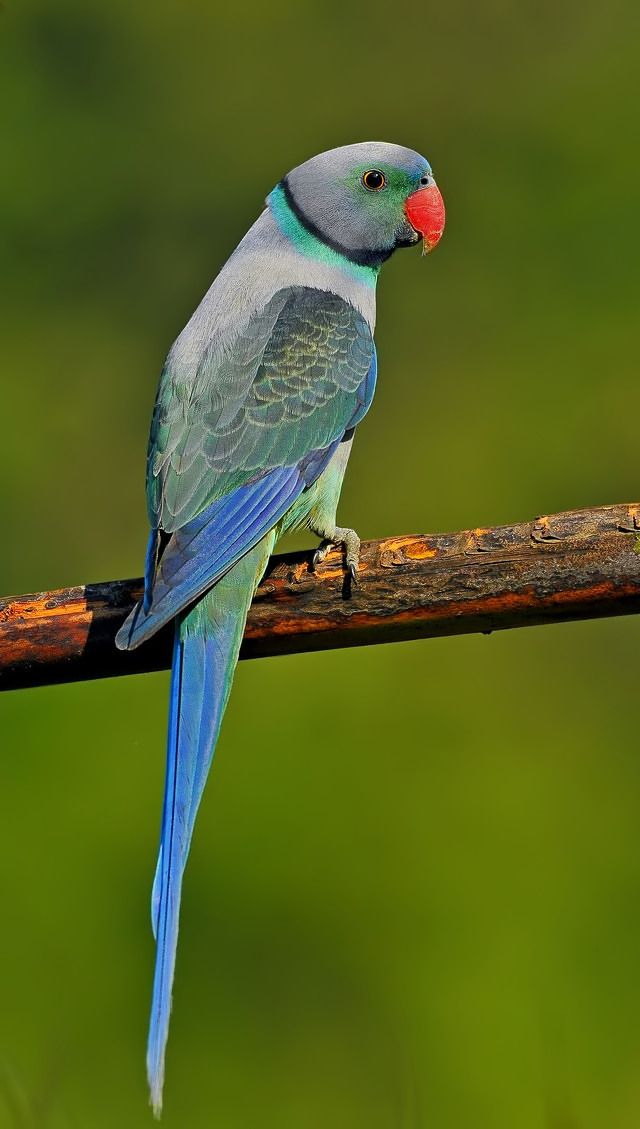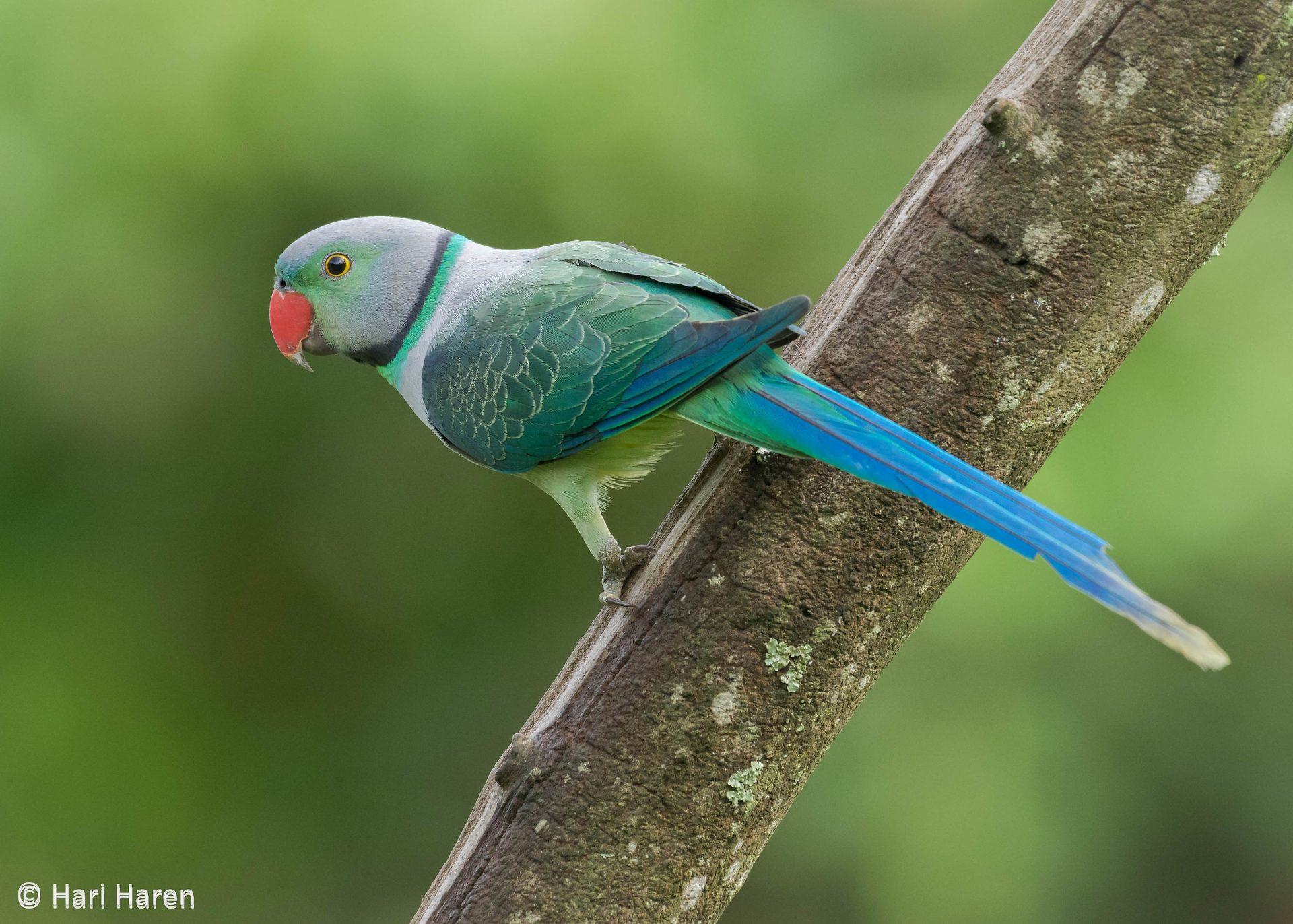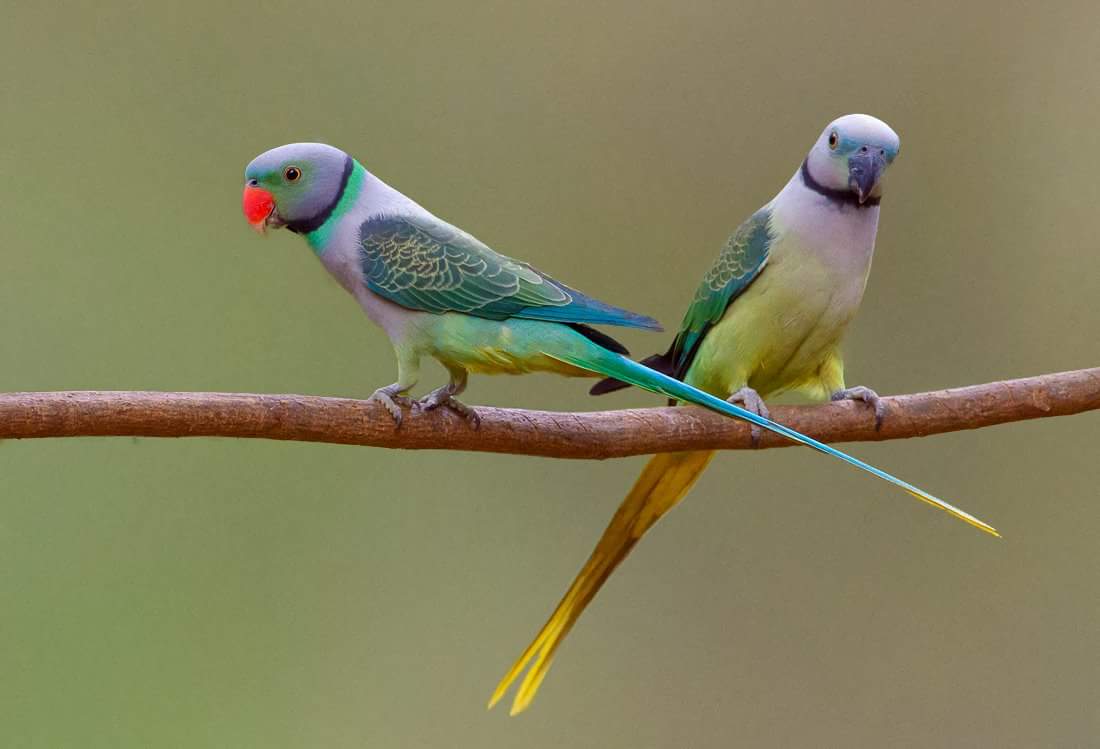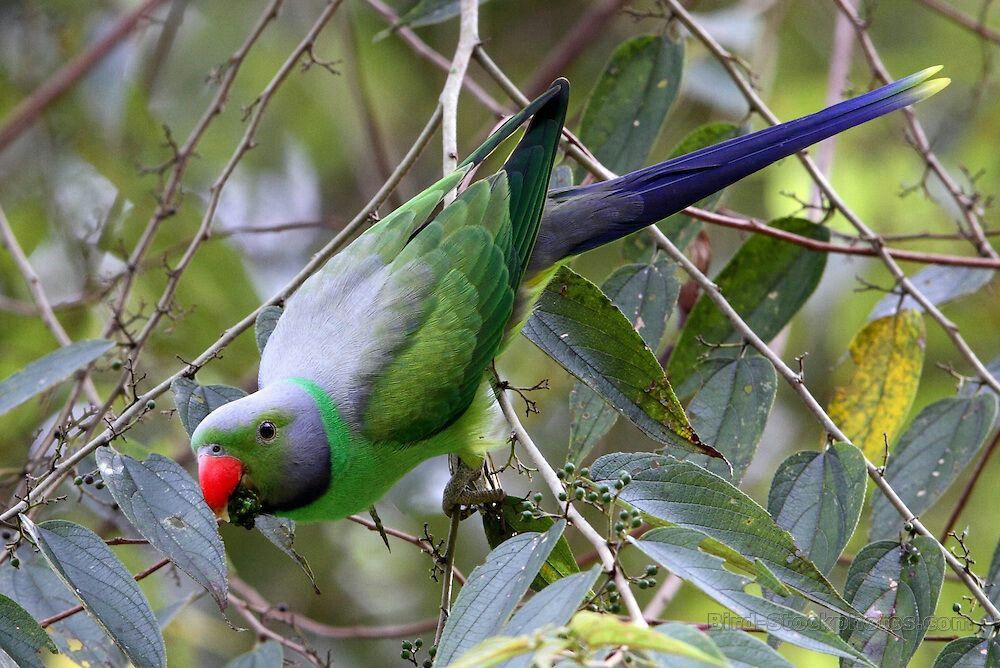The Malabar Parakeet: A Jewel of the Western Ghats
The Malabar Parakeet, also known as the Blue-winged Parakeet, is a medium-sized parrot belonging to the Psittacula genus. This exquisite avian species is endemic to the lush Western Ghats of Southeast India, where it finds its habitat amidst the verdant beauty of moist evergreen and semi-evergreen forests, as well as in plantations and gardens. It stands out as one of the most splendid and vibrant parrots in India, distinguished by a striking black ring encircling its neck and an elegant, elongated yellow tail. What’s particularly fascinating about these parakeets is that males and females display distinct plumage, making them easily distinguishable.

In the realm of plumage, the male Malabar Parakeet boasts a regal red upper beak, a vivid green collar around its neck, and resplendent azure wings and tail. In contrast, the female dons a black beak, sporting only a black neck ring and somewhat subdued blue wings and tail. Both sexes share a common palette of pale grayish-green for their bodies, further accentuated by a pristine white patch encircling their eyes.

This sociable and vociferous bird often takes to the skies in small flocks of 10 to 20 individuals, their presence announced by the shrill screeches as they traverse the forest canopy. Even when roosting in large groups at night, their vocalizations can be heard from afar. Their diet consists mainly of leaves, buds, flowers, fruits, seeds, and various berries from a diverse range of plants. Occasionally, they venture into farmlands, where they raid crops like maize, rice, and millet, causing farmers considerable concern. Additionally, these parakeets are known to savor nectar from blossoms such as Erythrina and Butea, showcasing their adaptability in seeking sustenance.

The Malabar Parakeet engages in monogamous relationships, with breeding occurring from December to April. Nesting primarily takes place within natural tree cavities, often in species like ficus and terminalia. Clutches typically consist of 3 to 4 eggs, diligently incubated by the female for approximately 21 days, during which the male assumes the role of provider. Once fledged, the young birds remain with their parents for a period before joining other flocks. Remarkably, the Malabar Parakeet can live up to 30 years in captivity, a testament to its robustness and adaptability.

Sadly, the Malabar Parakeet faces a precarious future, classified as a vulnerable species by the IUCN Red List of Threatened Species. The primary threats arise from habitat loss, fragmentation, degradation, and conversion due to activities like logging, agriculture, mining, and urbanization. Furthermore, local communities sometimes hunt these birds for sustenance, trade, and sport. While Indian law offers protection, enforcement remains lax, and poaching persists. Shockingly, the Malabar Parakeet is occasionally sought after in the illegal wildlife trade, commanding a high price.

Conservation initiatives seek to raise awareness among local communities, promote ecotourism, and engage in habitat restoration and protection. The Malabar Parakeet, with its vibrant plumage and unique presence, stands as both a symbol of India’s natural beauty and a poignant reminder of the need for its preservation.




